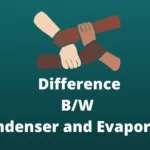Searching to about Difference between Statics and Dynamics in Engineering mechanics.
You will learn everything is to know about Statics and Dynamics in this post. So scroll gently to see everything there is to know about the same at your fingertips.
So, let’s get started now…
Introduction-
The branch of physics that deals with the study of the motion of matter are called Mechanics. Mechanics can be classified into the following two main branches:
- Statics
- Dynamics

Statics-
Statics is a branch of Mechanics that deals with the analysis of loads and their effects on the system when its velocity is zero or it has a static balance with the environment (relative motion is zero).
The system can be stationary or it is the center of mass movement at a constant speed.
However, the term statics also generally represents the analysis of stationary hard body loads. The loads on the system are force, torque, or speed.
Statics relates to the analysis of loads and their effects on the system when its velocity is zero or relative motion is zero.
Statics is primarily concerned with the workload on stationary bodies, which means balance. Statics are about forces acting on the static body.
All the forces working on the body are in balance.

Dynamics-
Dynamics is an important branch of engineering mechanics that deals with forces and their effects when the body is in motion. Dynamics is the study of force when the body is moving.
However, researchers involved in dynamics study how the physical system can evolve or change over time and study the causes of these changes.
In addition, Newton established the basic laws of physics that govern dynamics in physics. However, by studying its mechanics and system, dynamics can be understood.
In particular, most of the dynamics are related to Newton’s second law of motion. However, all three laws of motion are observed because they are interconnected in any observation or experience.

Dynamics is divided into the following two parts.
- Kinetics
- Kinematics
Kinetics
Kinetics is an important branch of dynamics that deals with the movement of bodies due to the use of force. The branch of mechanics deals with the relationship between the motion of a system and the cause of motion (the forces acting on it and the torque).
Kinetics is used to learn about features such as displacement, speed, and velocity and how they change over time.
For Example:
Study of movement of transmission pulleys, gears, etc.
Kinematics
Kinematics is an important branch of dynamics, which deals with bodies in motion without considering the force for movement of the body.
Kinematics is concerned with the relationship between the motion of a system and the causes of its motion. Dynamics is like studying motion without knowing the cause of motion.
Kinematics describes the motion of an object without considering the forces that cause it to move. Kinematics is only interested in pure movement; the system is considered as the point of the body.
It is used to learn about features such as displacement, speed, velocity, and their variability over time.
For example:
The study of the movement of transmission pulleys, gears, etc.
Statics vs Dynamics- What’s the Difference?
| Statics | Dynamics |
| The study of force on the object in rest conditions is known as Statics. | The study of forces on the object in motion is known as Dynamics. |
| Force= Mass*Acceleration | Force= Mass*Acceleration |
| It deals with the analysis of force | It deals with inertia, velocity, acceleration, and time |
Why It is Important to Know Statics and Dynamics-
They form the base for many other interesting fields of study, such as-
- Fluid Dynamics
- Aerodynamics
- Aeronautics
- Hydraulics
A basic understanding will consider things like car crashes, explosions, gunshots, and many more.
Wrapping up-
These were the basic difference between statics and dynamics in mechanics or statics vs Dynamics along with the definitions. I hope you liked the way it was presented to you. If so, consider sharing with your friends and colleagues.
Before you go, Here are some suggested articles, you should read further-
Screw Jack: Definition, Working, Types, Applications
Uses of Screw Jack: All you need to Know
Simple Lifting Machine: Introduction, types, uses
Simple Screw Jack and Their Application
8 Different Types of Screws & Their Uses
Thank you for being with me. I hope to see you soon.

Abhishek Tiwary is a blogger by passion and a Quality Engineer by profession. He completed his B.Tech degree in the year 2017. Now working in a reputed firm. He loves to share his knowledge with others.
![Difference between Orificemeter and Venturimeter [With PDF] Difference between Orificemeter and Venturimeter [With PDF]](https://www.engineersrail.com/wp-content/uploads/2021/09/difference-between-orificemeter-and-venturimeter-150x150.webp)


